a town on the east shore of the Trondheim Fjord
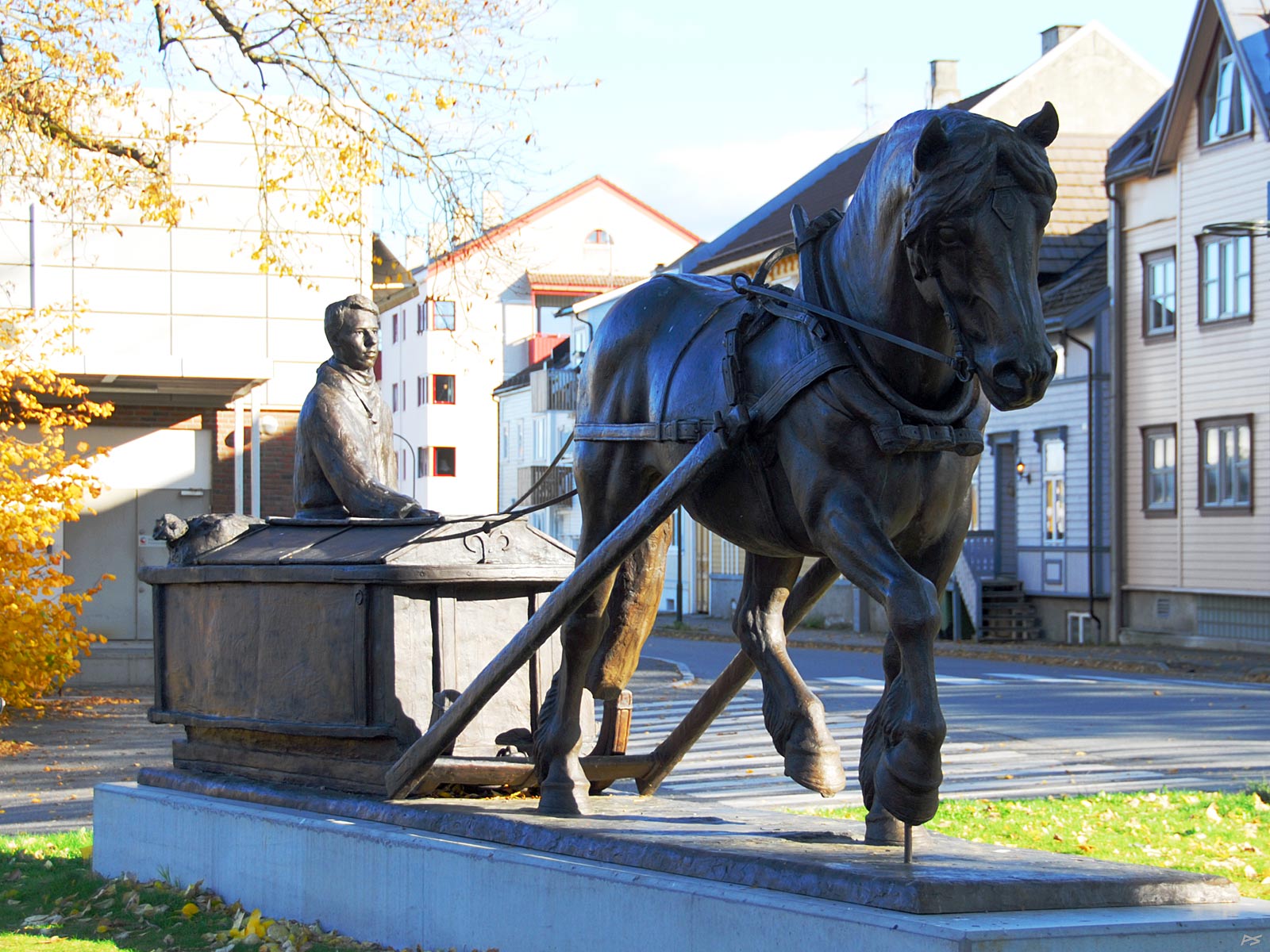
"Horse and sledge", bronze sculpture by Oddmund Raudberget 2013
(2014-10-06)
Levanger is the name of a municipality and of the town that is its administrative centre. Located on the east side of the Trondheim fjord, the town was a trade centre for many centuries; traders coming from north and south, but more importantly from Jämtland out east. (Jämtland belonged to Norway till 1645; now it is Swedish.) The goods were transported (at least to and from Jämtland) on horse sledges, therefore a fair took place in winter, beginning the first Monday after 24 February (the traditional feast of St. Matthias the Apostle, the one who replaced Judas Iscariot, you know). The Levanger fair (Marsimartnan) was first mention in writing by Archbishop Olaf Engebregtson in 1530, but it probably began about 1170 when the corresponding fair (Gregorymartnan) in Frösön, Jämtland began. This kind of trade subsided in the early 1880s after Östersund (close to Frösön) had got railway connections to both Trondheim and south Sweden, but some of the horse trade continued.
In 1989 the Levanger fair (Marsimartnan) was reestablished and has since been arranged every winter. Its character may have changed, but horses and sledges are still arriving from Sweden. Shortly prior to the Levanger fair there is a similar traditional fair in Røros, and two weeks after the Levanger fair Gregorymartnan in Jämtland begins, now having moved to Östersund.
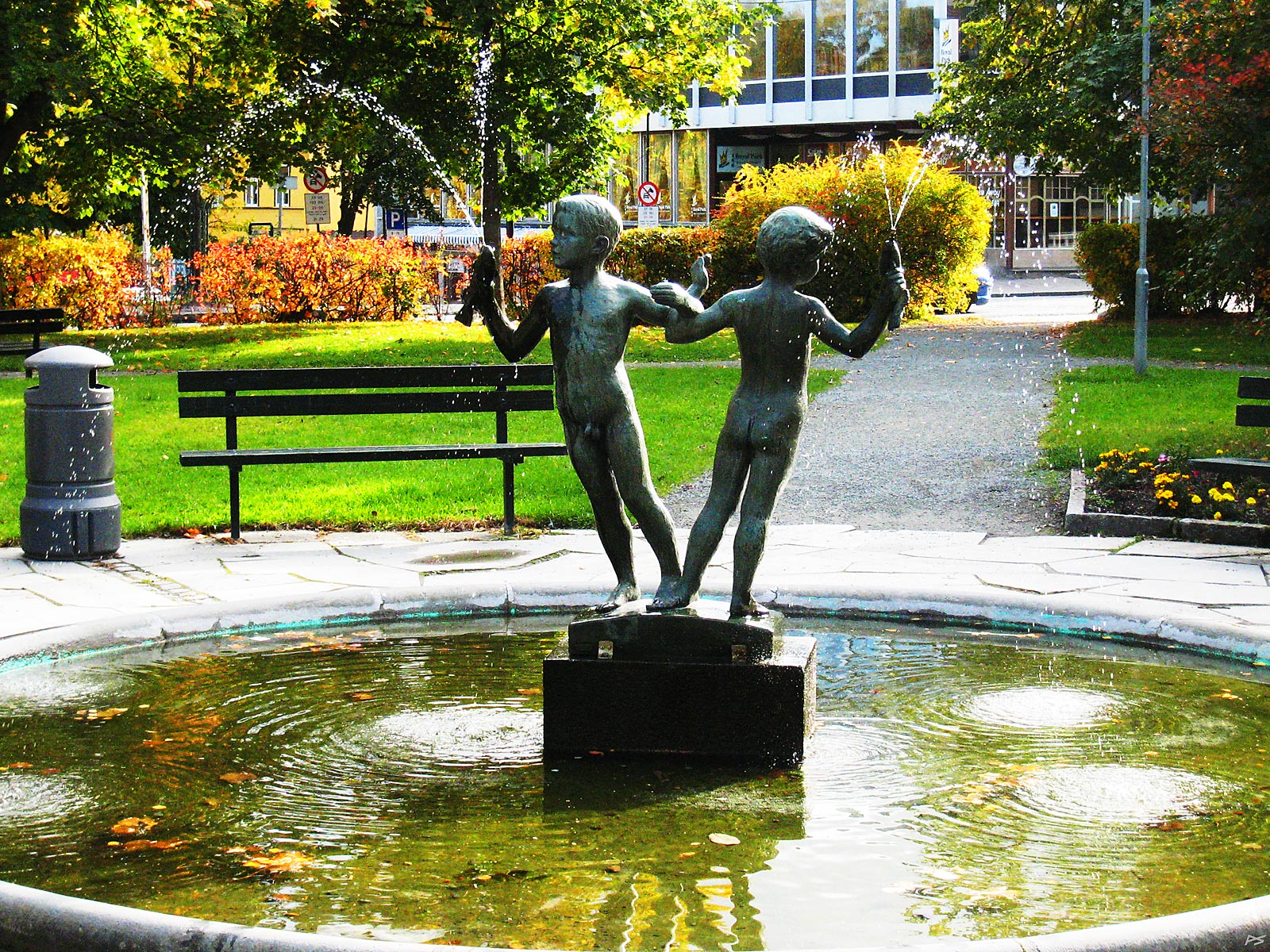
"Girl and boy", sculpture by Arne Durban 1964 in the "upper park" (Sejersted's park).
(2008-09-26)
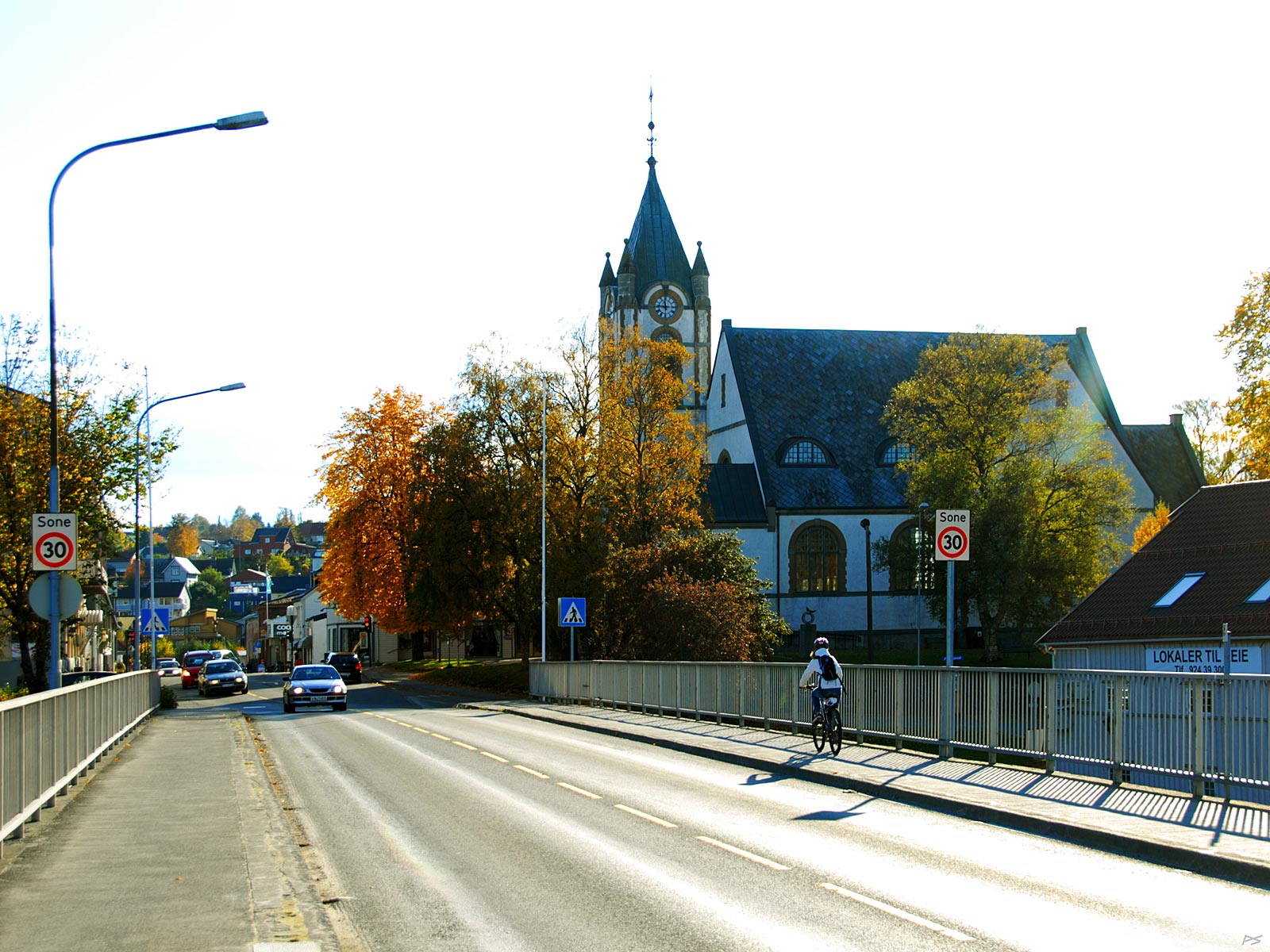
The church seen from the bridge across Sundet (the Strait).
(2014-10-06)
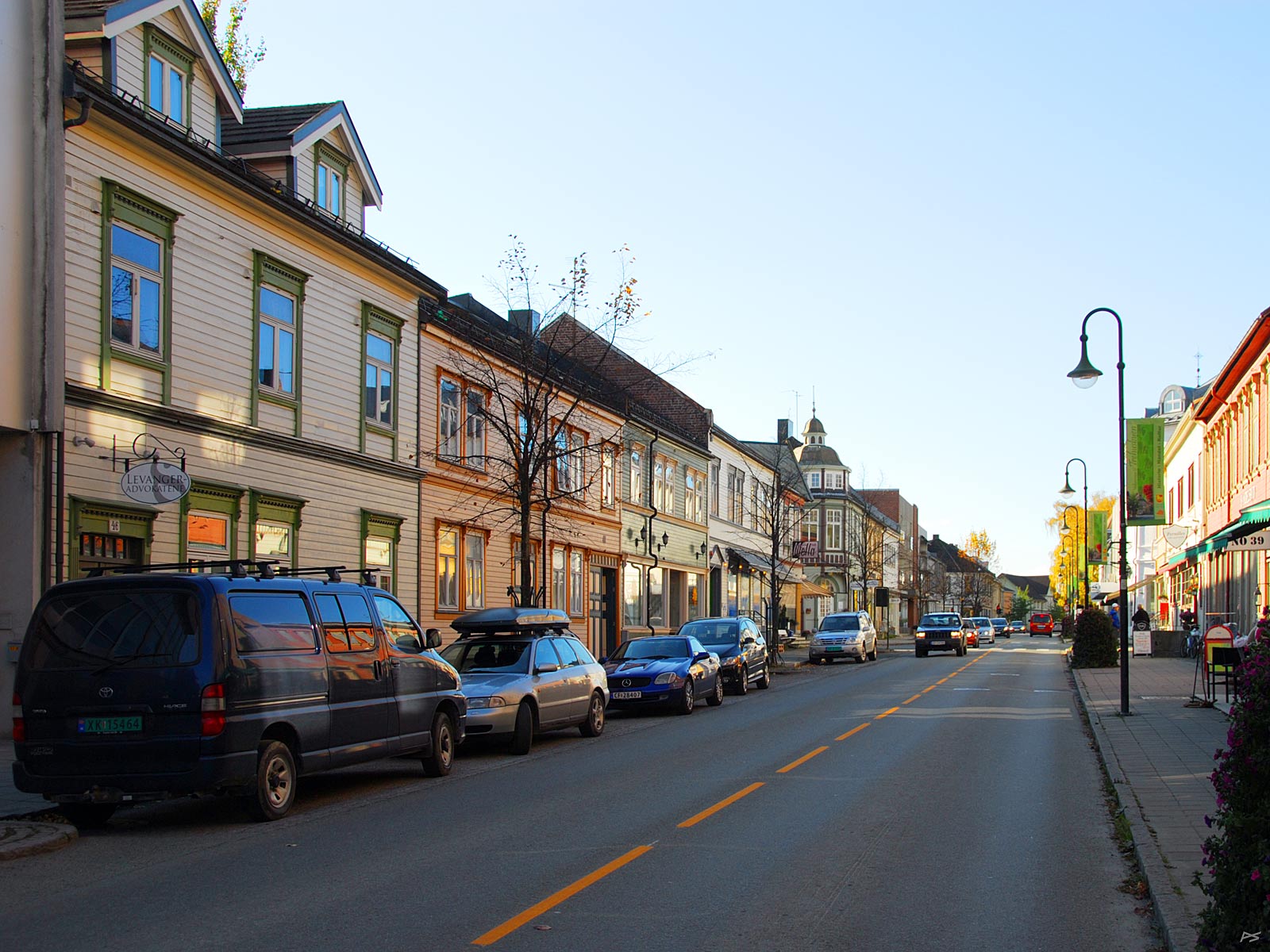
From the main street, Kirkegata. This has always been a wooden town, and after the great fires in 1846, 1865, 1877, and 1897, most houses were rebuilt from wood. The authorities are in a process of preserving about 200 houses in the town.
(2014-10-06)
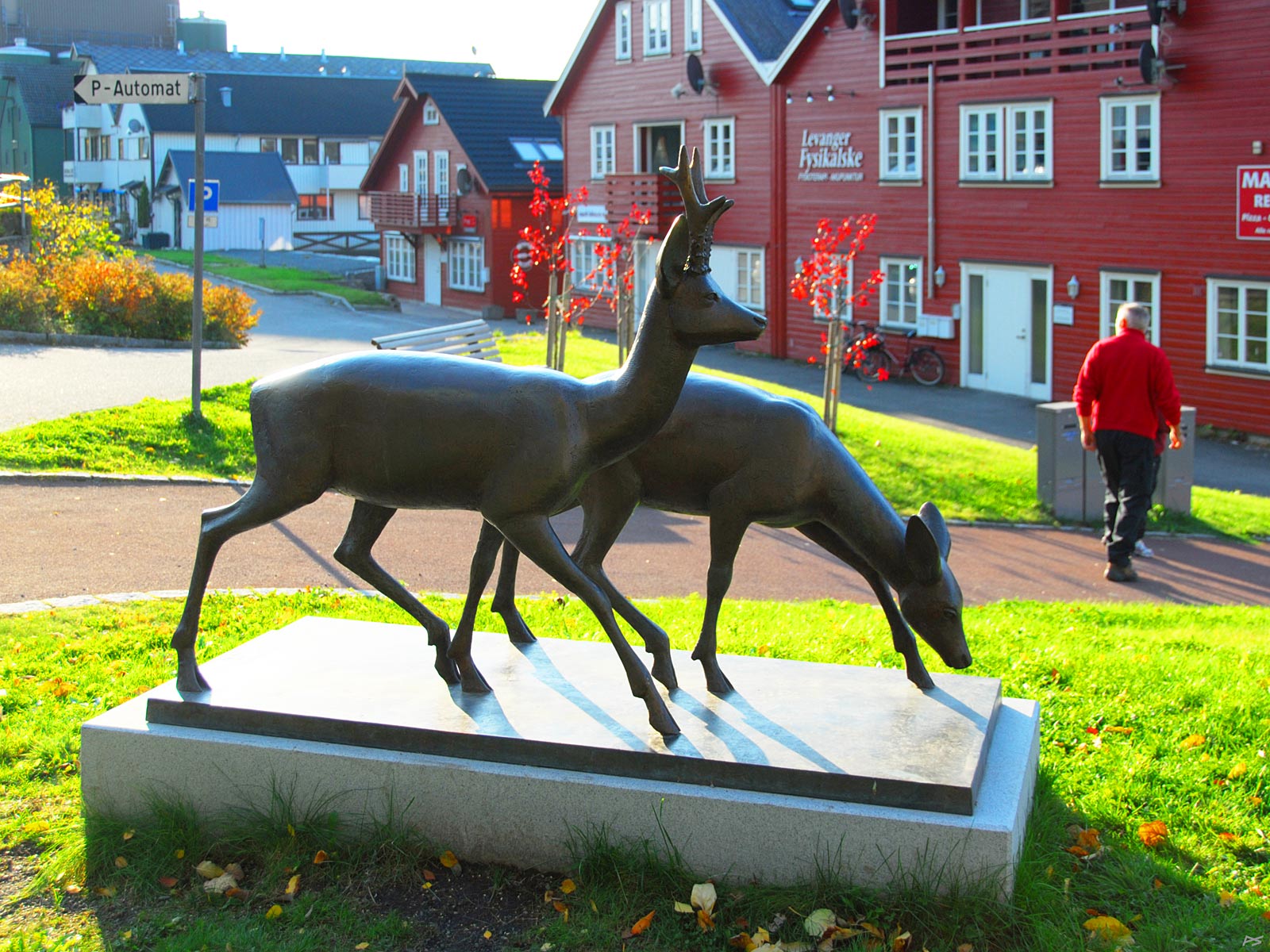
"Roe deer", sculpture by Skule Waksvik 2011.
(2014-10-05)
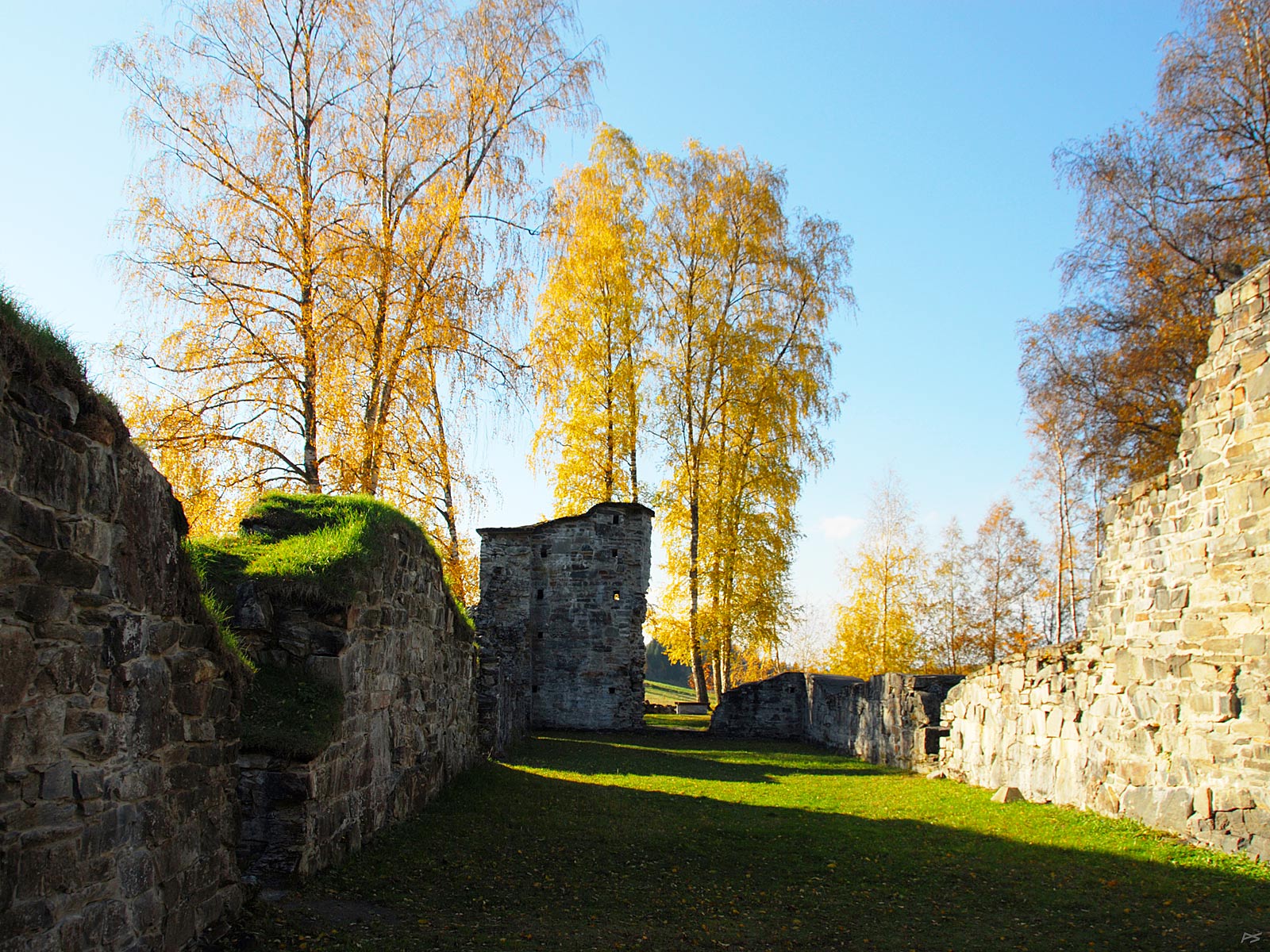
On Munkeby (=abode of the monks), about six kilometres east of the town, at the Levanger river, the ruins of a church is an attraction. A monastery, now completely disappeared, and the church, was built by Cistercian monks during 1150–1180, but in 1207 they moved to the Tautra monastery. Afterwards, until a fire in 1587, the church was used by the parish. Later it was used as a quarry.
In 2009 a new Cistercian monastery was establish in the neighbourhood, the Munkeby Mariakloster.
(2014-10-05)

The Levanger coat of arms.
The horse symbolizes the trade (i.e. transport), but also the horse trade in particular.
